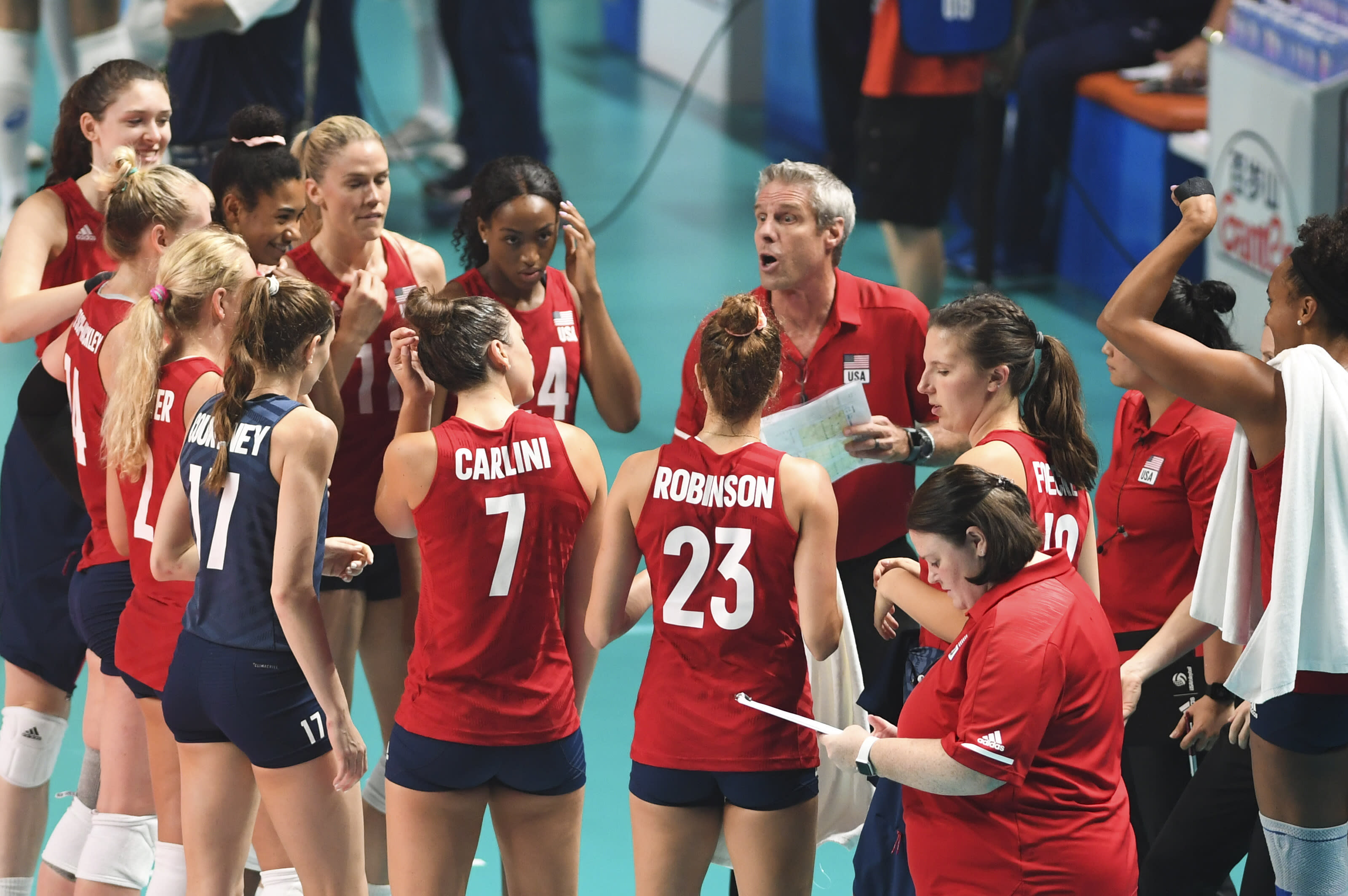History and Evolution of Women’s Olympic Volleyball
The story of women’s Olympic volleyball is a captivating journey of athletic prowess, strategic innovation, and the relentless pursuit of excellence. From its humble beginnings to its current status as a global phenomenon, the sport has undergone a remarkable transformation, leaving an indelible mark on the world of sports.
Early Development and Inclusion in the Olympics
The origins of women’s volleyball can be traced back to the early 20th century, when the sport was first introduced in the United States. The game quickly gained popularity, particularly among women, who embraced its energetic and strategic nature. The International Volleyball Federation (FIVB) was established in 1947, laying the foundation for the sport’s global expansion.
Women’s volleyball made its Olympic debut at the 1964 Tokyo Games, where the Soviet Union emerged victorious, showcasing their exceptional skills and tactical acumen. The inclusion of women’s volleyball in the Olympics marked a significant milestone, providing a platform for female athletes to compete on the world stage and inspire generations to come.
Rules and Playing Styles
The rules of women’s volleyball have evolved significantly throughout its Olympic history, reflecting the sport’s dynamic nature and the constant pursuit of athletic excellence. Early iterations of the game featured a more traditional approach, with a focus on basic fundamentals and a relatively slower pace of play.
The introduction of the libero position in 1996 revolutionized the game, allowing for specialized defensive players who could contribute to the team’s success without being restricted by the traditional rotation system.
The evolution of rules and playing styles has resulted in a more dynamic and exciting game, characterized by lightning-fast rallies, powerful spikes, and strategic blocking.
Significant Milestones and Events
Throughout its Olympic history, women’s volleyball has witnessed numerous significant milestones and events that have shaped its trajectory.
- The Soviet Union’s dominance in the early years of the Olympics established a high standard of play and paved the way for the emergence of other strong volleyball nations.
- The rise of China and Brazil as volleyball powerhouses in the 1980s and 1990s introduced new playing styles and strategies, further enriching the sport’s diversity.
- The introduction of the libero position in 1996 revolutionized the game, allowing for specialized defensive players who could contribute to the team’s success without being restricted by the traditional rotation system.
The 2000 Sydney Olympics witnessed the introduction of the “Golden Set,” a tiebreaker played to 15 points, which added another layer of excitement and unpredictability to the tournament.
The continuous evolution of women’s volleyball, both in terms of rules and playing styles, has resulted in a sport that is more captivating, competitive, and engaging than ever before. The sport’s global appeal continues to grow, inspiring athletes and fans alike.
Notable Players and Teams in Women’s Olympic Volleyball

The history of women’s Olympic volleyball is replete with extraordinary athletes who have left an indelible mark on the sport. Their dedication, skill, and unwavering spirit have inspired generations of players and fans alike. This section delves into the legacies of some of the most influential players and teams, exploring their contributions to the sport’s evolution and their impact on the global volleyball landscape.
Influential Players in Women’s Olympic Volleyball
The impact of individual players on the sport of volleyball is undeniable. Their exceptional skills, strategic prowess, and unwavering determination have shaped the game’s evolution and captivated audiences worldwide.
- Regla Torres (Cuba): Known for her exceptional blocking abilities and powerful attacks, Torres is considered one of the greatest volleyball players of all time. She led Cuba to three Olympic gold medals (1992, 1996, and 2000) and numerous other international titles. Her dominance at the net and her ability to inspire her teammates earned her widespread recognition and admiration.
- Misty May-Treanor (USA): Widely regarded as one of the greatest beach volleyball players of all time, May-Treanor, along with her partner Kerri Walsh Jennings, dominated the sport for over a decade. They won three consecutive Olympic gold medals (2004, 2008, and 2012), showcasing exceptional athleticism, strategic brilliance, and a deep understanding of the game. Their success helped elevate the profile of beach volleyball and inspire a new generation of players.
- Kim Yeon-koung (South Korea): A towering figure at 6’4″, Kim Yeon-koung is renowned for her powerful spikes and exceptional athleticism. She has been a dominant force in international volleyball, leading South Korea to numerous victories, including a silver medal at the 2012 London Olympics. Her ability to adapt her game and her consistent performance at the highest level have earned her widespread respect and admiration.
Successful Teams in Women’s Olympic Volleyball
The success of women’s Olympic volleyball is often attributed to the collective efforts of teams that have consistently demonstrated excellence on the court. These teams have not only achieved remarkable victories but also inspired a new generation of players and elevated the sport’s global profile.
- Cuba (1992-2000): During this period, the Cuban women’s volleyball team dominated the sport, winning three consecutive Olympic gold medals (1992, 1996, and 2000). Their success was a testament to their exceptional talent, teamwork, and strategic brilliance. They were known for their powerful attacks, strong defense, and unwavering determination, making them a formidable force on the court.
- USA (2008-2012): The American women’s volleyball team achieved remarkable success during this period, winning two consecutive Olympic gold medals (2008 and 2012). Their dominance was fueled by a combination of exceptional individual talent, strategic brilliance, and a strong team culture. They were known for their versatile offense, solid defense, and a relentless pursuit of victory.
- Brazil (2008-2016): Brazil’s women’s volleyball team has consistently been a force to be reckoned with in international competition. They have won two Olympic gold medals (2008 and 2016) and numerous other international titles, showcasing their exceptional athleticism, tactical acumen, and a deep understanding of the game. Their success is a testament to the dedication and passion of their players and coaches.
Strategies and Techniques Employed by Prominent Players and Teams
The strategies and techniques employed by prominent players and teams have played a pivotal role in shaping the evolution of women’s Olympic volleyball. These innovations have not only enhanced the game’s spectacle but also contributed to its strategic complexity.
- “Fast Offense” Strategy: This strategy, popularized by the Cuban team in the 1990s, emphasizes quick sets and fast attacks, aiming to catch the opposing team off guard. It involves a rapid exchange of the ball between the setter and hitter, allowing for powerful attacks before the defense can react.
- “Blocking Mastery”: The Cuban team, particularly during the 1990s, was renowned for its exceptional blocking abilities. Their ability to shut down opponents’ attacks at the net was a key factor in their dominance. This involved strategic positioning, timing, and coordination between blockers, creating an impenetrable wall for opposing hitters.
- “Beach Volleyball Style”: The influence of beach volleyball on indoor volleyball has been significant. The emphasis on individual skills, athleticism, and agility has been incorporated into indoor play, particularly in the USA. This has led to a more dynamic and entertaining style of play, with players showcasing exceptional athleticism and creativity.
Women’s Olympic volleyball is a thrilling spectacle of athleticism and teamwork. The intensity of each match is palpable, with every spike, block, and dig leaving the crowd breathless. To keep up with the action, you can check out the volleyball at the summer olympics schedule and results and follow the journey of these incredible athletes as they battle for Olympic glory.
Women’s Olympic volleyball is more than just a sport; it’s a testament to the strength, skill, and resilience of these extraordinary women.
Women’s Olympic volleyball has always been a spectacle of athleticism and grace. These powerful women, fueled by passion and determination, deliver a symphony of spikes, blocks, and digs that leaves audiences breathless. The history of this sport is a thrilling journey, as seen in the evolution of olympic volleyball itself.
Women’s Olympic volleyball continues to inspire, pushing boundaries and redefining what’s possible on the court.

